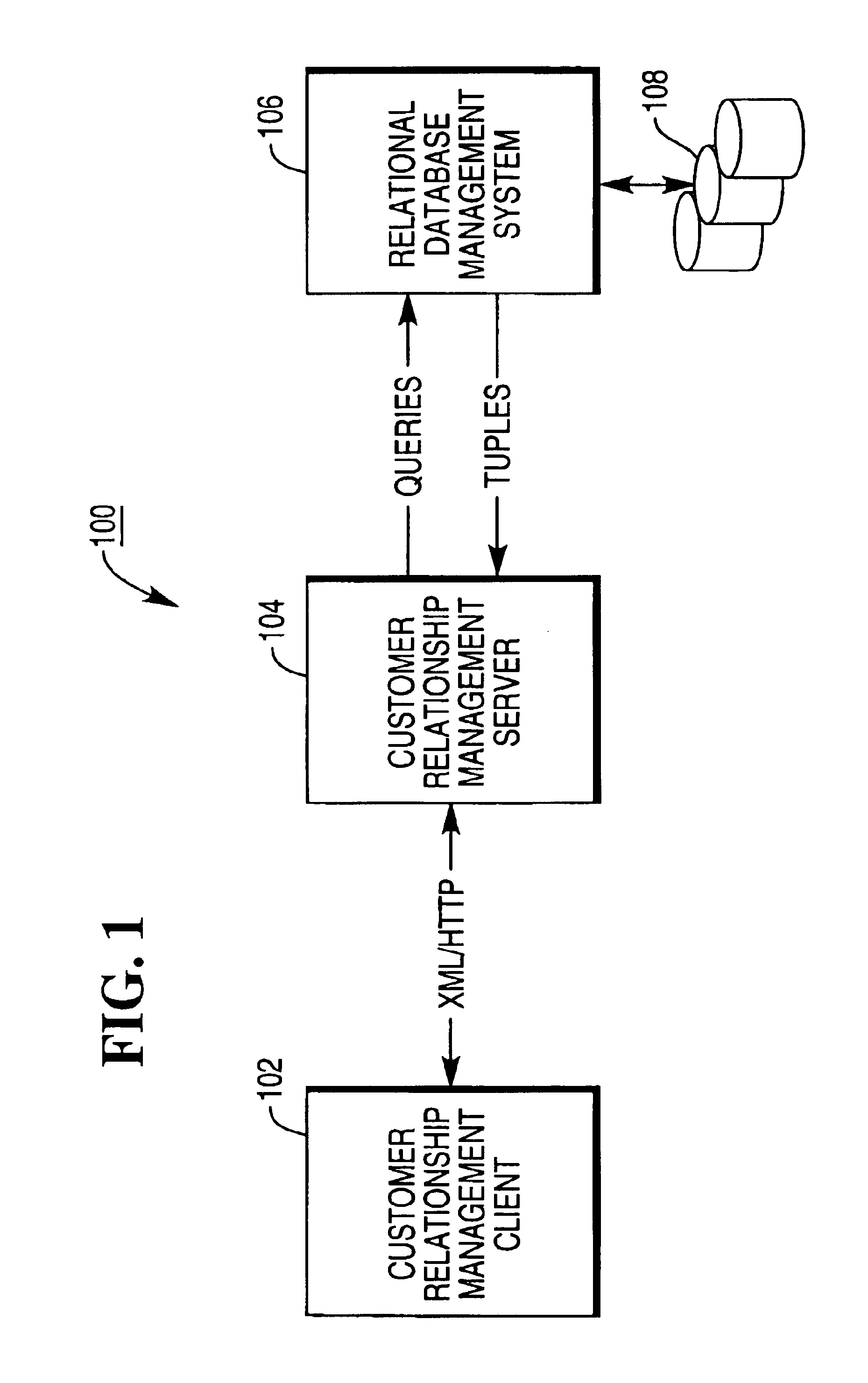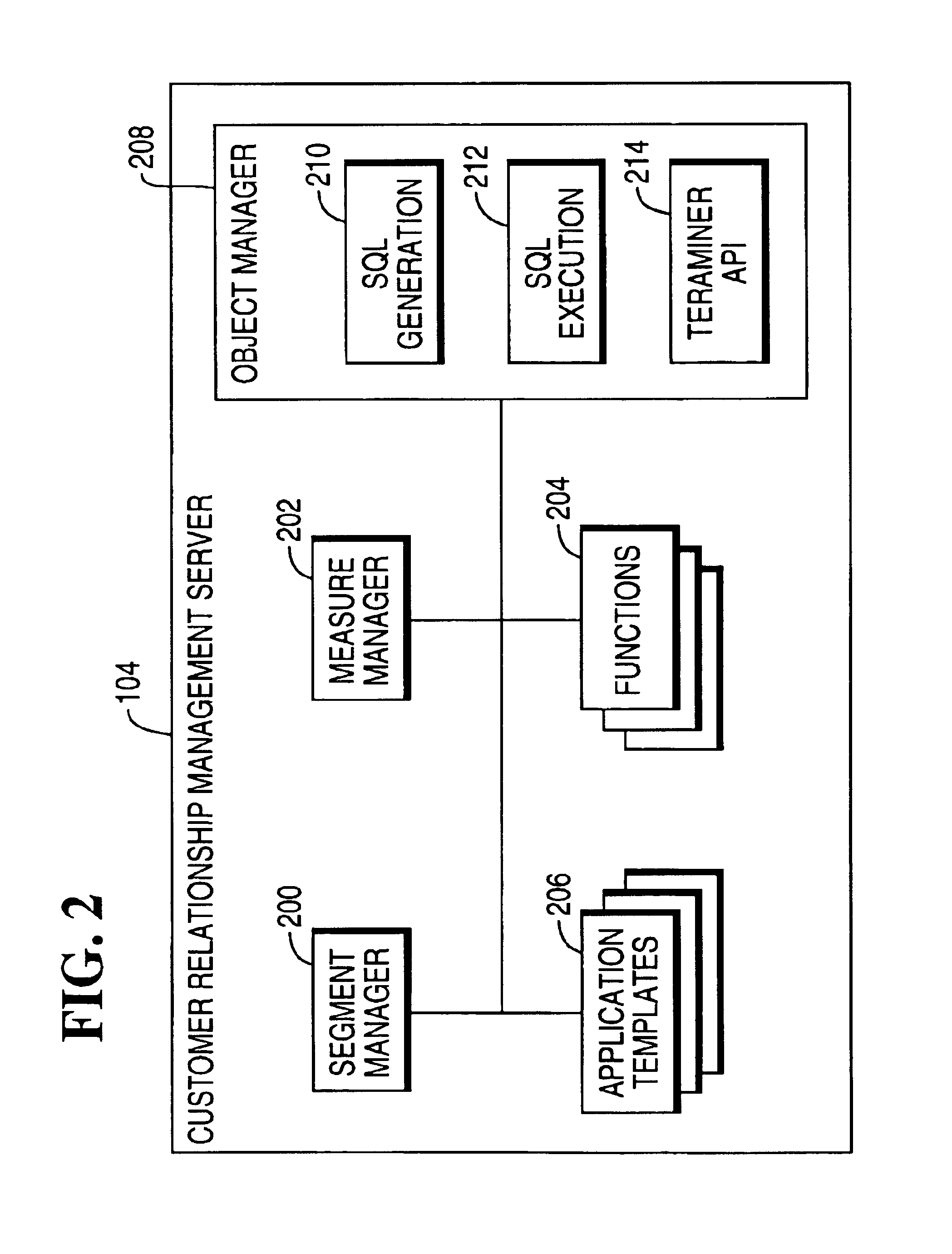Building predictive models within interactive business analysis processes
a business analysis and business technology, applied in the field of database management systems, can solve the problems of increasing the difficulty of implementing predictive modeling systems, and the difficulty of implementing predictive models, and achieve the effect of improving the effectiveness of predictive modeling systems
- Summary
- Abstract
- Description
- Claims
- Application Information
AI Technical Summary
Problems solved by technology
Method used
Image
Examples
example application
[0079 Template
[0080]The following describes an example Application Template 206. Assume that a cellular phone company has been losing customers in California, due to increased competition in the state. In preparing for a retention campaign, the user develops an Attrition Propensity model that will predict which customers are most likely to terminate their service with the company. She accomplishes this by adapting a pre-built Application Template206 that encapsulates the knowledge gained by a prior user in addressing the same class of problem in a similar industry. Thus, the types of customers and the data that is available about them is assumed to be similar.
[0081]The approach taken by the Application Template 206 is to create a Segment comprising 50% customers who recently terminated service and 50% loyal customers, and to use this data to build and then test a model to identify the characteristics that differentiate the two types of customers. Prior to separating the input Segmen...
PUM
 Login to View More
Login to View More Abstract
Description
Claims
Application Information
 Login to View More
Login to View More - R&D
- Intellectual Property
- Life Sciences
- Materials
- Tech Scout
- Unparalleled Data Quality
- Higher Quality Content
- 60% Fewer Hallucinations
Browse by: Latest US Patents, China's latest patents, Technical Efficacy Thesaurus, Application Domain, Technology Topic, Popular Technical Reports.
© 2025 PatSnap. All rights reserved.Legal|Privacy policy|Modern Slavery Act Transparency Statement|Sitemap|About US| Contact US: help@patsnap.com



